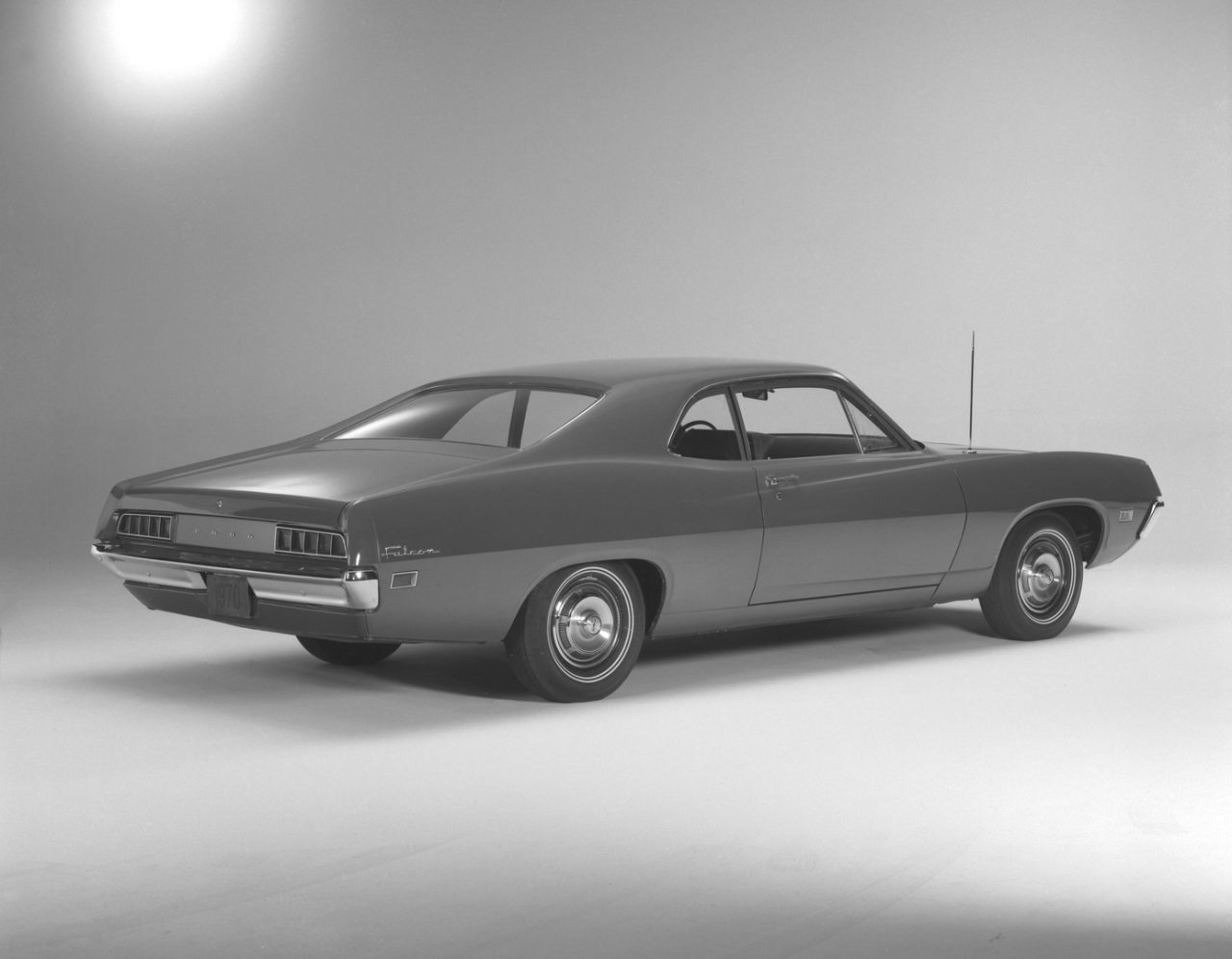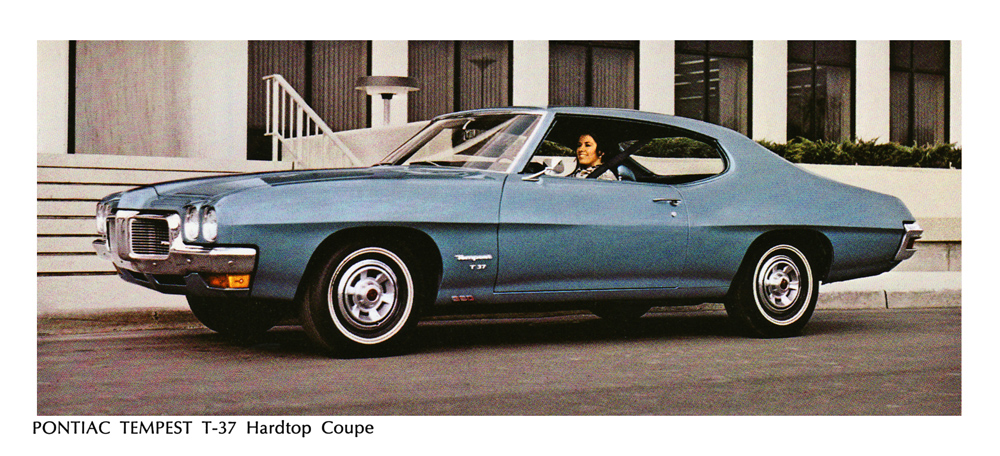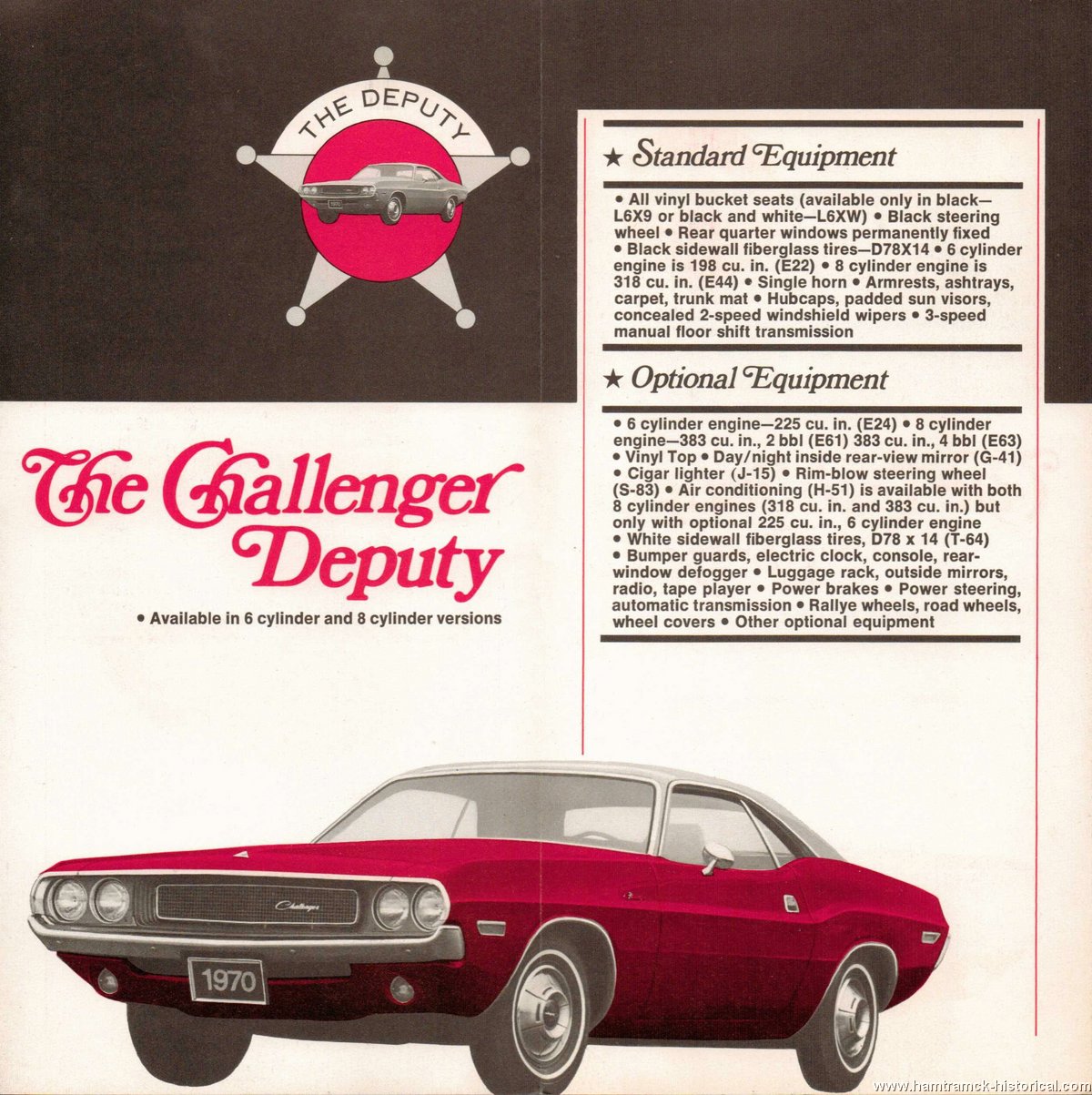Read the headlines today and it seems everything is doom and gloom: gas prices this, supply chain that and, oh yeah, inflation is at its highest point in 40 years. The current flavor of fire and brimstone appears to be a fear of an impending recession.
Most people are unaware of economic history, but there was a recession from December 1969 through November 1970. Inflation was rising too—not a good time to buy a new car. Sales were down drastically among sporty cars, among others, so what could manufacturers do to exploit the economic downturn? Let’s examine the 1970 model year for some ideas how consumers were able to stretch their dollar.

1970½ Ford Falcon
Here’s a Ford that’s surrounded by an enigma. Look at this car and you’ll think “Torino” but there’s more to the story because it’s not.
At the start of the model year, the Fairlane 500 was the lowest mid-size vehicle on the totem pole (with Torino Cobra, Torino, Torino GT and Torino Brougham completing the roster). However, at the turn of the calendar year, Ford introduced an addition to the series: the 1970½ Falcon. This was rather interesting because the compact 1970 Falcon had been phased out at the end of 1969 as Maverick production had begun the previous April. What set the new Falcon apart from Fairlane 500, aside of offering fewer standard features, was the availability of a two-door sedan (with B-pillar) in addition to a four-door sedan and station wagon. Ford bragged that the $2480 two-door was priced at least $112 less than anything else its size.
However, this special mid-year model was produced only for several months and then discontinued for the 1971 model year. It’s unknown why Ford went through the expense of creating a two-door sedan when none existed in the Fairlane and Torino lines, only to discontinue it after approximately six months. On the other hand, the 429 Cobra Jet was an option, giving Blue Oval enthusiasts a cheap, lightweight way to score a win down the drag strip (as if the Fairlane 500 wasn’t cheap or light enough). Out of 26,071 Falcon 2-door sedans built in that abbreviated model year, only 159 had the CJ.

1970½ Pontiac Tempest T-37
Another car surrounded by an enigma that still gets people scratching their heads—even Pontiac fans.
At the start of the 1970 model year, the cheapest mid-size Pontiac was the Tempest two-door coupe (with B-pillar). However, a promotional hardtop sub-model was introduced to the Tempest line mid-year called Tempest T-37. This was touted as “The newest lowest-priced hardtop you can buy” with a base price of $2,683 with the 250 six. Pontiac marketing thought of the T-37 as a way to offer more automobile for one’s money to those who were seriously considering a smaller car like a Plymouth Duster. Bigger is better, right?
Unlike in previous years, big engines were available for A-bodies besides the GTO, so the T-37 could be optioned with the 330-horsepower 400 4bbl (though most had the 350 2bbl. by a large margin). Strangely, the 400 paired with an automatic received small-valve heads like those found on a Catalina, while those equipped with a three- or four-speed manual transmission received the big-valve heads identical to the standard 350-horse engine for the GTO.
And it didn’t end there, as Pontiac introduced a GT package for the T-37 in April 1970. The GT-37, as it was known, featured hood pins, side stripes taken from the 1969 GTO Judge, G70x14 white-letter tires on Rally II mags (sans trim rings), dual exhausts with valence panel shared with the GTO, 350 2bbl. with floor-shifted three-speed, and GT-37 identification. When equipped with the 400 4bbl. and a stick, it was Pontiac’s Road Runner-fighter for all intents and purposes.
The T-37 officially replaced the Tempest line in 1971, but it was dropped for 1972.

1970-71 Plymouth Barracuda Coupe and Dodge Challenger Deputy
While the above cars were specific models with their own respective identities, these Mopar E-bodies are simply Barracuda and Challenger hardtops with the A93 package. The package actually removed features normally standard on the Barracuda and Challenger to bring the cost down and, as such, A93-equipped Barracudas and Challengers (the latter known as the Deputy) were officially designated as coupes. What’s the difference? Rear side windows were fixed, plus cheaper all-vinyl bucket seats were used. Other features included standard 198 Slant Six, black two-spoke steering wheel, D78x14 blackwalls, single horn, and two-speed windshield wipers. A cigar lighter was optional, believe it or not! To give you an idea of the price, the basic Dodge Challenger hardtop equipped with the 225 Slant Six was $2,851, but the Challenger Deputy cost $2,724 with a 198 Slant Six, Options included the 225 Slant Six upgrade as well as 318, 383 2bbl. and 383 4bbl. engines.
According to Robert B. McCurry, Dodge General Manager, “We are getting 14 per cent of the compact specialty market, and we believe that this new, lower-priced model will help our dealers sell more Challengers.” Only Dodge bean counters would know whether the effort was worth the cost and complexity, especially considering how many were built: for the 1970 Barracuda with the A93 package, 945 U.S.-spec cars had either of the Slant Sixes, while 520 featured a V-8 (four of them 383 4bbls.); for the Deputy, 1,864 were built with the six, while 1,265 were built with V-8s (six of them 383 4bbls.). In 1971, information is sparse, as it is only known that 592 U.S.-spec V-8 Barracudas had the A93 option (10 of those 383 bbls.); for the Deputy, 760 of either Slant Six while 1,293 V-8s (including 16 383 4bbls.) were built.






Well American car makers are stupid. Coupes are in style and should never have been discontinued GM. Not everyone wants a four door i sure as hell dont and never will .
Well American car makers are stupid. Coupes are in style
What I don’t want and will never buy is a euro/aero egg shaped gutless SUV that drives itself. BTW are they all white? Oh, yeah, and nothing electric.